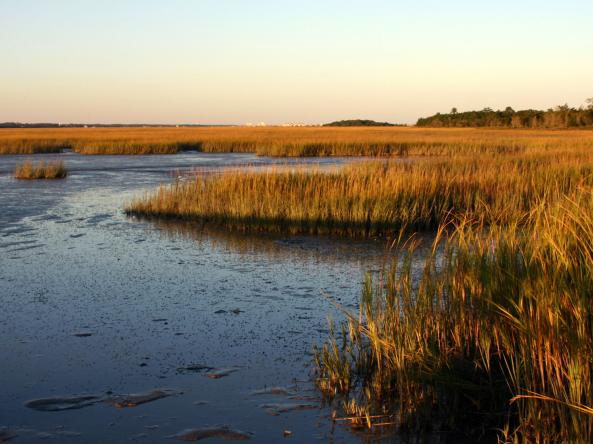Next month’s Southeast Monthly Climate Webinar is on Tuesday, March 9 at 10 am ET, with a special presentation on the Spring Flood Outlook. Watch the February 9 webinar recording, and register for upcoming webinars.
Climate Conditions and Seasonal Outlooks
- January temperatures were near average for the region.
- January precipitation was variable across the Southeast, with above-average precipitation for eastern North Carolina and below-average precipitation for Alabama and Florida.
- The U.S. Caribbean had near-average temperatures and below-average precipitation.
- Severe weather in the region included an EF-3 Tornado in Alabama.
- La Niña Advisory is still in effect and will continue for winter (95% chance January-March), with a potential transition to neutral during spring (55% chance April-June).
- Looking ahead: The next 6-10 days have an active pattern with the probability of colder temperatures (warmer for Florida) and wetter conditions for the Southeast. Spring will be warm with the southern part of the Southeast likely to be dry.
Current U.S. Drought Monitor map for the Southeast with data valid for February 2, 2020. The U.S. Drought Monitor (USDM) is updated each Thursday to show the location and intensity of drought across the country. Drought categories show experts’ assessments of conditions related to dryness and drought including observations of how much water is available in streams, lakes, and soils compared to usual for the same time of year.
Moderated Drought (D1) is present in Alabama and Puerto Rico. Pockets of Abnormally Dry (D0) conditions remain in other parts of the region.
U.S. Drought Monitor Categories
Current U.S. Drought Monitor map for the Southeast with data valid for February 2, 2020. The U.S. Drought Monitor (USDM) is updated each Thursday to show the location and intensity of drought across the country. Drought categories show experts’ assessments of conditions related to dryness and drought including observations of how much water is available in streams, lakes, and soils compared to usual for the same time of year.
Moderated Drought (D1) is present in Alabama and Puerto Rico. Pockets of Abnormally Dry (D0) conditions remain in other parts of the region.
Drought
- Short-term Moderate Drought (D1) is present in Alabama and Puerto Rico, and Abnormally Dry (D0) conditions are present in Florida with a few pockets elsewhere.
- Looking ahead: There is possible drought development in southern Alabama, Georgia, and South Carolina, and all of Florida.
Water Resources and Flooding
- Streamflows remain above normal across the Carolinas and near normal for Florida and Georgia, with near-normal to below-normal conditions across Alabama.
- Looking ahead: The streamflow forecast shows more of the same for February but is trending to near normal across the entire Southeast by March and April.
Agriculture Impact and Outlook
- Recent wet conditions have hindered field preparation and caused problems for pastures in the Carolinas and Virginia.
- Adverse weather conditions have caused disease issues for strawberries, melons, and vegetables.
- Chill hours should be sufficient for most fruit varieties.
- Looking ahead: It has not been a typical La Niña so far, but it may return to a typical drier pattern later in the winter.
Spotlight: 2020 in Review
- 2020 was a year of extremes across the U.S. and the Southeast.
- 2020 was the second warmest year for the Southeast. Minimum temperatures were record warm.
- 2020 was the third wettest year for the Southeast, with an active storm track over the Southeast for much of the year.
- Drought impacted mostly Florida during spring and early summer. Puerto Rico had summer drought.
- Four tropical cyclones made landfall across the Southeast (Tropical Storm Bertha, Hurricane Isaias, Hurricane Sally, and Tropical Storm Eta).
- The tornado outbreak of April 12-13 was the most prominent of the year. Strong tornadoes swept through Alabama, Georgia, and South Carolina.
- 14 billion-dollar disasters impacted the Southeast – 9 severe weather events and 5 tropical cyclones, totaling $37.7 billion (~40% of the total cost for all U.S. disasters in 2020).
- Useful links from NOAA's National Centers for Environmental Information (NCEI):
What Happened: Southeast Temperature

What Happened: Southeast Precipitation

Current Conditions: River Flood Status

Looking Ahead: Streamflow Forecast

Looking Ahead: Seasonal Outlooks



Acknowledgments
Webinar Speakers
- Sandra Rayne, Southeast Regional Climate Center
- Jeff Dobur, National Weather Service Southeast River Forecast Center
- Pam Knox, University of Georgia
- Karin Gleason, NOAA National Centers for Environmental Information
- Kelsey Satalino, National Integrated Drought Information System (NIDIS)
Relevant Regional Resources
Southeast Regional Climate Center (SERCC) [website currently under construction]
NWS Southeast River Forecast Center (SERFC)
Streamflow Monitoring & Forecasting
NWS Climate Prediction Center, Outlook Products
Climate and Agriculture in the Southeast - Blog
ACIS Climate Maps, High Plains Regional Climate Center
El Niño/Southern Oscillation (ENSO):
The Southeast Climate Monthly Webinar series is held on the second Tuesday of each month at 10 am ET. This series is hosted by the Southeast Regional Climate Center, in partnership with the National Integrated Drought Information System (NIDIS) and the NOAA National Weather Service. These webinars provide the region with timely information on current and developing climate conditions, such as drought, floods, and tropical storms, as well as climatic events like El Niño and La Niña. Speakers may also discuss the impacts of these conditions on topics such as agriculture production, water resources, wildfires, and ecosystems.
For webinar-related questions or suggestions, please contact Meredith Muth, NOAA/NIDIS, meredith.f.muth@noaa.gov.





